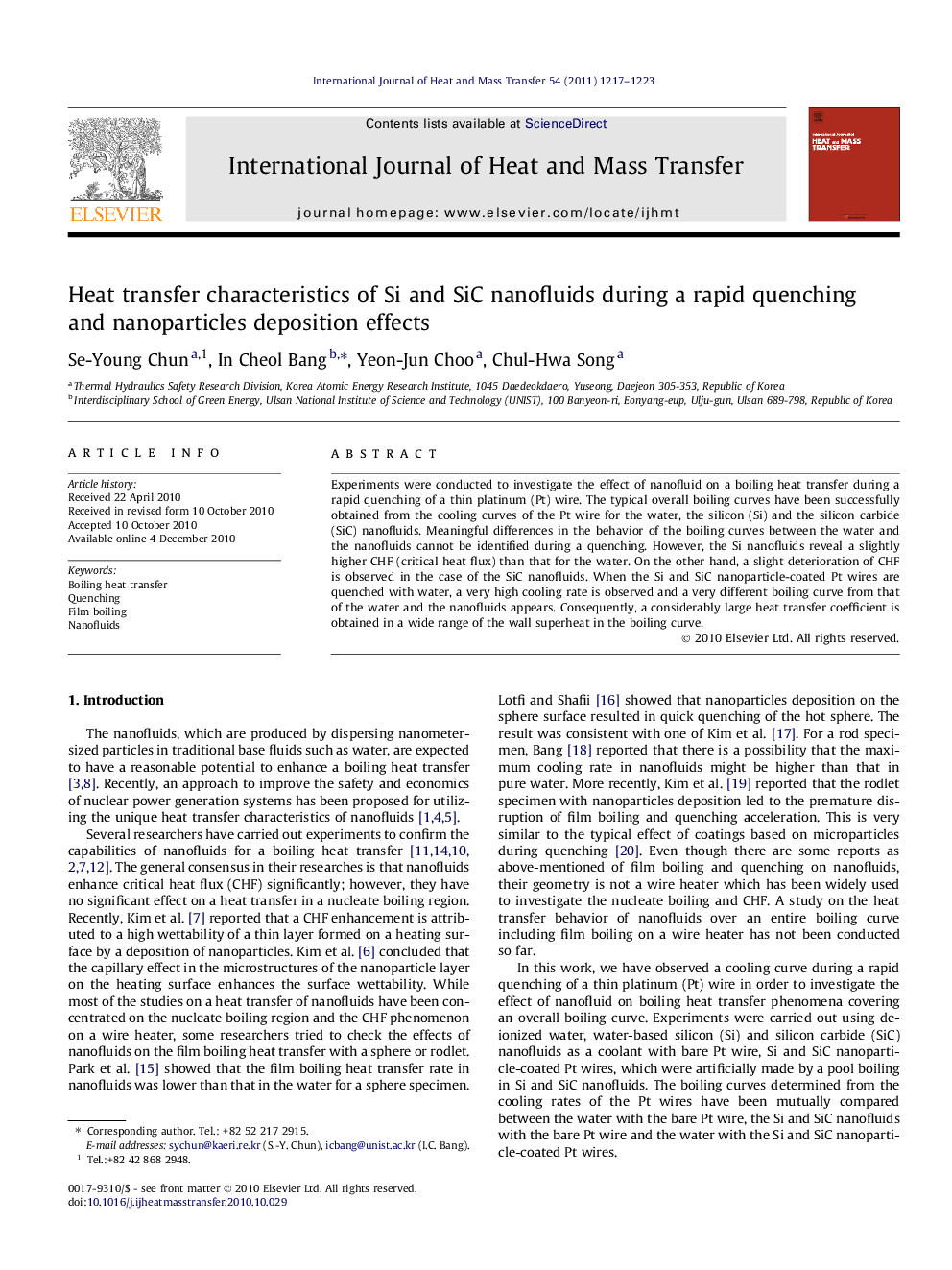| Article ID | Journal | Published Year | Pages | File Type |
|---|---|---|---|---|
| 7059932 | International Journal of Heat and Mass Transfer | 2011 | 7 Pages |
Abstract
Experiments were conducted to investigate the effect of nanofluid on a boiling heat transfer during a rapid quenching of a thin platinum (Pt) wire. The typical overall boiling curves have been successfully obtained from the cooling curves of the Pt wire for the water, the silicon (Si) and the silicon carbide (SiC) nanofluids. Meaningful differences in the behavior of the boiling curves between the water and the nanofluids cannot be identified during a quenching. However, the Si nanofluids reveal a slightly higher CHF (critical heat flux) than that for the water. On the other hand, a slight deterioration of CHF is observed in the case of the SiC nanofluids. When the Si and SiC nanoparticle-coated Pt wires are quenched with water, a very high cooling rate is observed and a very different boiling curve from that of the water and the nanofluids appears. Consequently, a considerably large heat transfer coefficient is obtained in a wide range of the wall superheat in the boiling curve.
Related Topics
Physical Sciences and Engineering
Chemical Engineering
Fluid Flow and Transfer Processes
Authors
Se-Young Chun, In Cheol Bang, Yeon-Jun Choo, Chul-Hwa Song,
